Finishing touches to Murillo
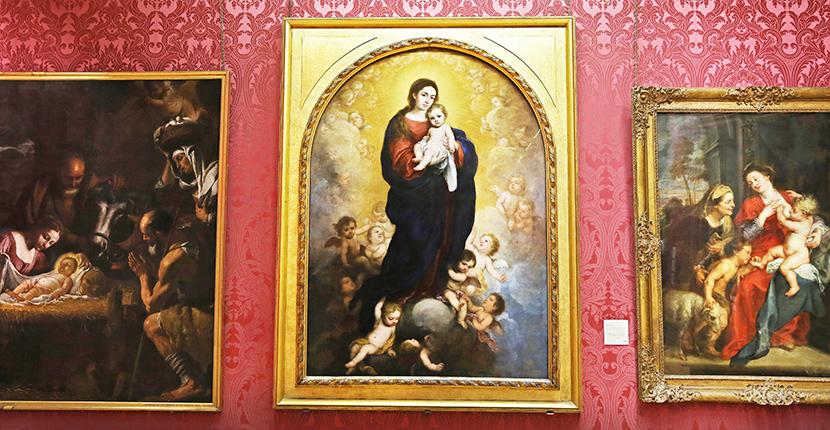
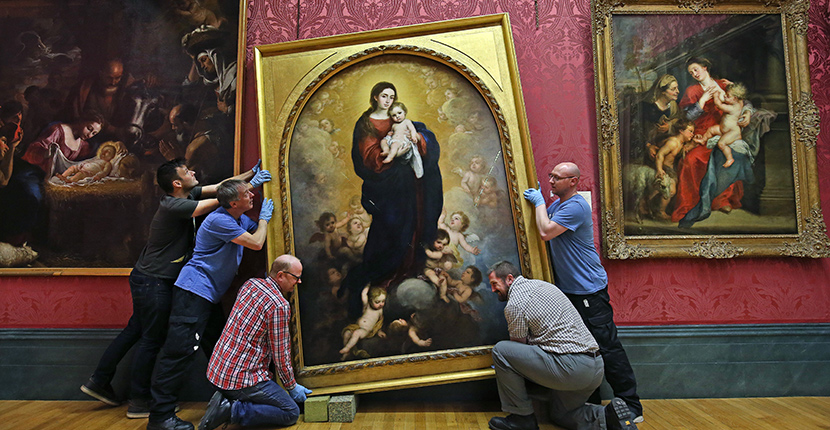 Installation of Bartolomé Esteban Murillo’s altarpiece Virgin and Child in Glory (1673) at the Walker Art Gallery
The practical treatment of Bartolomé Esteban Murillo’s altarpiece Virgin and Child in Glory (1673) finished in August, marking the end of a year-long major conservation project, which you can track in my previous blog posts.
The final phase of treatment involved retouching damages and losses on the oil sketch and Virgin and Child in Glory (1673).
The dramatic history of the painting, including the cutting and removal of the central section of the Madonna and Child, meant that two pieces from the same artwork had separate histories, and thus visually aged differently.
Therefore, the aim of this phase of treatment was to reduce the distraction caused by cutting line around the Madonna and Child by retouching the areas of loss.
Installation of Bartolomé Esteban Murillo’s altarpiece Virgin and Child in Glory (1673) at the Walker Art Gallery
The practical treatment of Bartolomé Esteban Murillo’s altarpiece Virgin and Child in Glory (1673) finished in August, marking the end of a year-long major conservation project, which you can track in my previous blog posts.
The final phase of treatment involved retouching damages and losses on the oil sketch and Virgin and Child in Glory (1673).
The dramatic history of the painting, including the cutting and removal of the central section of the Madonna and Child, meant that two pieces from the same artwork had separate histories, and thus visually aged differently.
Therefore, the aim of this phase of treatment was to reduce the distraction caused by cutting line around the Madonna and Child by retouching the areas of loss.
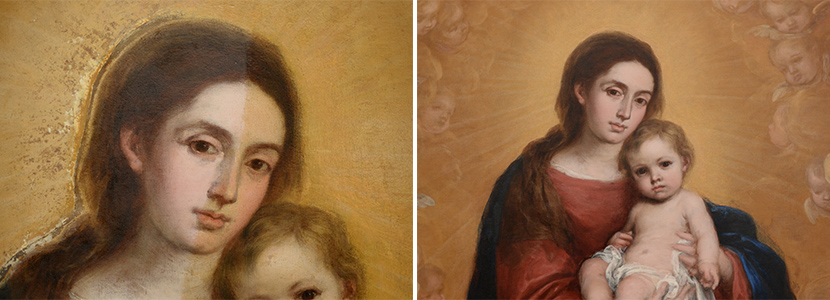 Left: Varnish has been removed from the left side of her face revealing where the painting was cut. Right: After treatment.
In addition, my goal was to balance the subtle differences that developed between the two sections of the painting while they were separated.
There are different approaches and techniques used in the field of conservation to retouch artworks as well as many rationales but they all share the same intent to respect the artist's work and to reduce the intervention made by the conservator.
Left: Varnish has been removed from the left side of her face revealing where the painting was cut. Right: After treatment.
In addition, my goal was to balance the subtle differences that developed between the two sections of the painting while they were separated.
There are different approaches and techniques used in the field of conservation to retouch artworks as well as many rationales but they all share the same intent to respect the artist's work and to reduce the intervention made by the conservator.
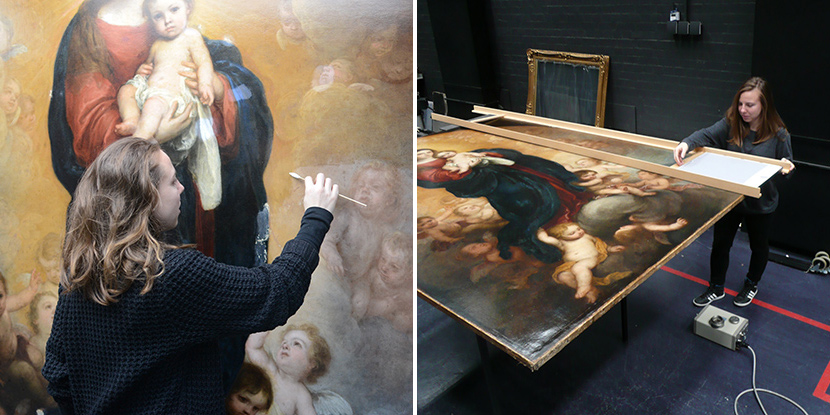 Left: Olympia Diamond, Paintings Conservator, removing the yellow discoloured varnish. Right: Olympia Diamond positioning the digital x-ray plate over the painting.
As a result, retouching done by the conservator should be stable and readily reversible. I re-varnished the painting as a protective measure and to re-saturate the surface. I then carried out the retouching over this layer, which will allow my retouching to be easily removable in the future without effecting the original surface.
Left: Olympia Diamond, Paintings Conservator, removing the yellow discoloured varnish. Right: Olympia Diamond positioning the digital x-ray plate over the painting.
As a result, retouching done by the conservator should be stable and readily reversible. I re-varnished the painting as a protective measure and to re-saturate the surface. I then carried out the retouching over this layer, which will allow my retouching to be easily removable in the future without effecting the original surface.
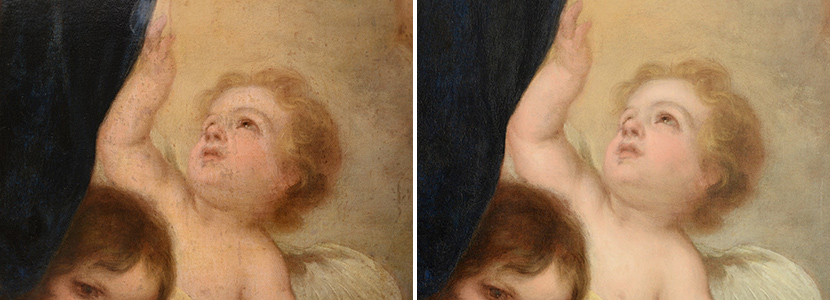 Left: Detail photograph of cherub before conservation treatment. Right: Detail photograph of cherub after conservation treatment.
After retouching was complete a final varnish was applied to unify the surface. Then, the painting was photographed, framed, and then installed in the Walker Art Gallery!
I travelled up to the Walker Art Gallery to see the painting re-hung by our excellent art handling team. Walking into Room Three I was struck by the size and grandeur of the painting. After spending months working millimetres from the surface and focusing on the details it was fantastic to see the whole work, framed and on the wall.
Left: Detail photograph of cherub before conservation treatment. Right: Detail photograph of cherub after conservation treatment.
After retouching was complete a final varnish was applied to unify the surface. Then, the painting was photographed, framed, and then installed in the Walker Art Gallery!
I travelled up to the Walker Art Gallery to see the painting re-hung by our excellent art handling team. Walking into Room Three I was struck by the size and grandeur of the painting. After spending months working millimetres from the surface and focusing on the details it was fantastic to see the whole work, framed and on the wall.
 Bartolomé Esteban Murillo’s altarpiece Virgin and Child in Glory hanging in the Walker Art Gallery
Bartolomé Esteban Murillo’s altarpiece Virgin and Child in Glory hanging in the Walker Art GalleryImages by Gareth Jones It is a unique experience to see all three works to relating to Murillo’s Virgin and Child and Glory together; the altarpiece, the oil sketch and the copy of the central section that was inserted into the altarpiece when the original central section was cut out. The copy was simultaneously examined and treated by Paintings Conservator Rebecca Kench. Viewing all the paintings with the new information that was uncovered during this fantastic project made the story of these works come to life. I hope you can come and see all that was revealed during this project, which was made possible by the Art Fund.
